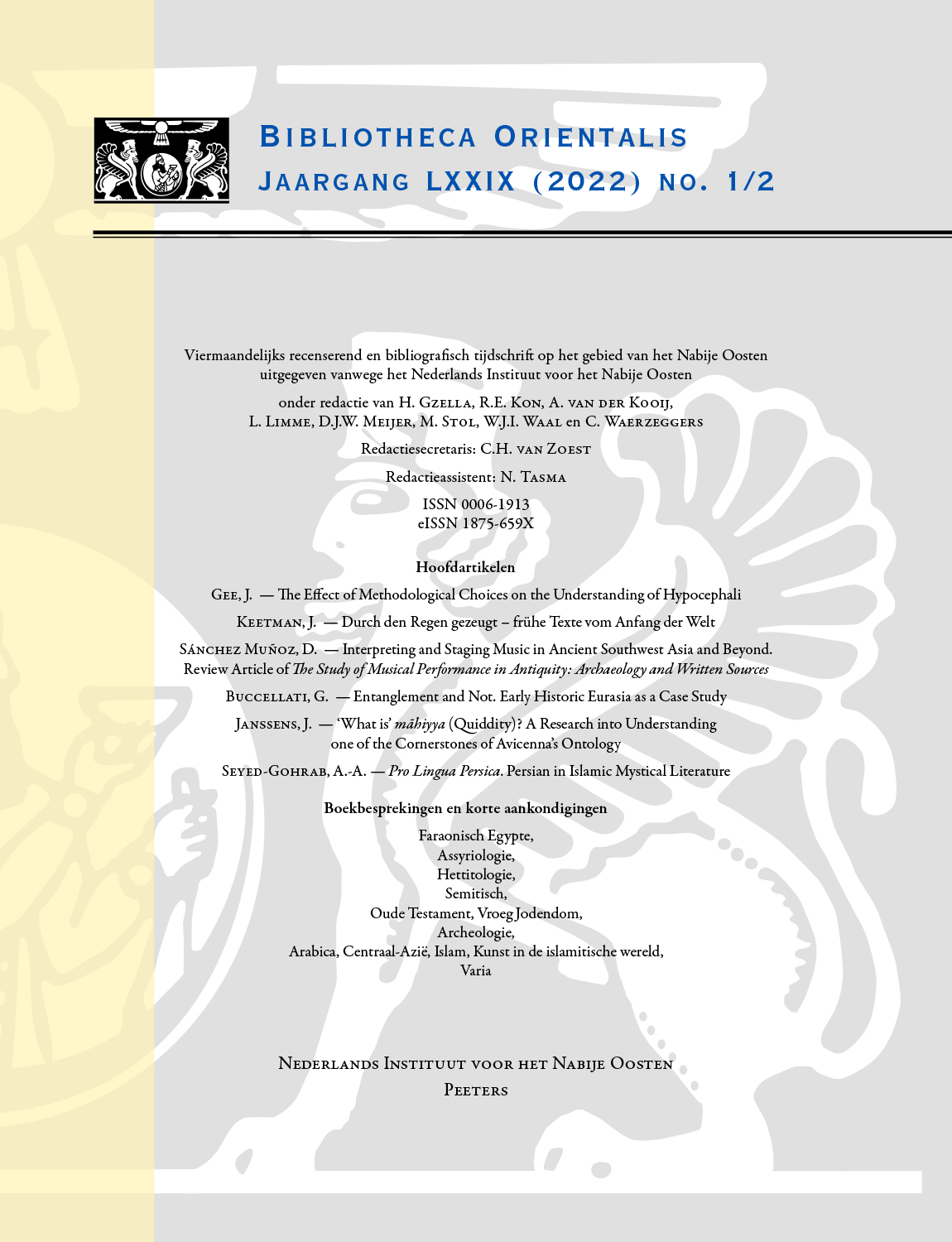next article in this issue  |

Preview first page |
Document Details : Title: Transitions of the Egyptian Concept of m3'ty Author(s): HIGO, Tokihisa Journal: Bibliotheca Orientalis Volume: 76 Issue: 5-6 Date: 2019 Pages: 443-455 DOI: 10.2143/BIOR.76.5.3287397 Abstract : The goddess Maat is the personification of the concept of maat, which is generally understood as the order of the universe, justice and truth, etc. While the goddess Maat is usually personified as one entity, she is occasionally depicted in the form of two goddesses and named Dual Maat (m3'ty). The words wsḫt nt m3'ty (the broad hall of Dual Maat) in Chapter 125 of the Book of the Dead shows that she became prominent from the New Kingdom onwards. Dual Maat reflects the Egyptian notion of dualism. Although the reduplication of the goddess Maat in the netherworld has been discussed by scholars, it is not clear yet what the reason for this reduplication is. The present article focuses on the attestation of m3'ty in earlier texts: the Pyramid Texts, the Palermo Stone and the Coffin Texts. It will be seen that the word m3'ty was predominantly used for the name of the bark or the two barks associated with the solar bark or the festival of Sokar, rather than with the dualistic divine name. The later, clear appearance of the reduplicated Maat may have been the result of intricate syncretic ideas attested in the Coffin Texts, identifying the bark(s) of Sokar with two Maat goddesses, the sun barks, the twin children of Atum and the Eyes of Horus. |
 |


